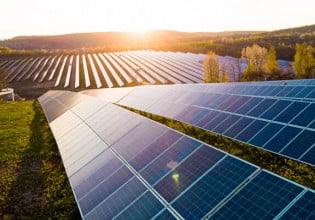Pan-Asian Researchers Present Latest DC-Powering Developments
At Darnell’s third-annual DC Building Power Asia conference (DCBPA ’11) in Taipei this week, the latest dc-power developments were presented by researchers from India, Taiwan, Korea, and Japan. During one of the networking breakout sessions, the latest dc-power standard and mandate from China was also reviewed by a group of colleagues.
The first day of the event, Dr. Tsai-Fu Wu, Chair Professor and Vice President of National Chung Cheng University in Taiwan and Director of the Elegant Power Application Research Center, presented the concept of the "smarter grid" where smart grid technologies are used to efficiently and comprehensively integrate local dc micro grids with the larger ac-power grid.
He observed that integration of renewable generation resources can be accelerated with the use of local dc micro grids. Dr. Wu concluded with the observation that "A smarter grid requires new standards and regulations, new dc electronic products and new dc power infrastructures."
Delta Electronics was represented by two speakers. Paul Lai, Delta’s Chief Engineer began with a detailed description of a "Modular High-Efficiency Non-Isolated 380Vdc Power System for Data Center." He presented a series of case studies including one of a 380Vdc power architecture for a conventional data center as well as a dc-powered containerized data center developed by Delta.
Later in the conference, Vajapeyam Sukumar, CTO with Delta Products India discussed, "Renewable Energy for Cellular Base Stations." He concluded that even though the energy needed to build the PV-Hybrid power system is significantly larger than that needed in the Diesel power system, with the PV-Hybrid PS, SO2 and CO2 emissions can be reduced even for short operation time (from 2 years of operation). In addition, operational reliability can be increased.
Representing Japan, Hideo Miyazawa, Executive Director with Fujitsu Components presented a "New Plug and Socket Outlet for 10A at 400Vdc." According to Mr. Miyazawa, in order for high-voltage dc power to be adopted, "It’s very important to overcome mental burden for IT and network operators or un-skilled engineers in the data centers." Fujitsu’s new connector assembly extends the power-handling capabilities of the company’s first-generation products.
Jong-Bok Baek, with the Power Electronics System Laboratory at Seoul University reviewed a "Digitally-Adaptive-Controlled Bidirectional DC-DC Converter for Energy Storage System." Intended to support energy-storage systems in photovoltaic generation applications, the zero-voltage-switching bidirectional dc-dc converter featured multi-phase interleaving, phase-shedding and digital frequency modulation.
Finally, a recent dc-power standard in China mandates that all telecommunications facilities and data centers adopt 240Vdc power. The retrofits will not involve any change in the existing 230Vac power supplies – the supply voltage will simply be switched to 240Vdc, saving a few percentage points of energy consumption. It was widely agreed that this is only a near-term "bandage" to gain small but immediate efficiency improvements. In the longer-term it is expected by the delegates at DCBPA ’11 that China will also adopt the 380/400Vdc standards being developed in other parts of the globe.
More news and information regarding the latest developments in Smart Grid electronics can be found at Darnell’s SmartGridElectronics.Net.






